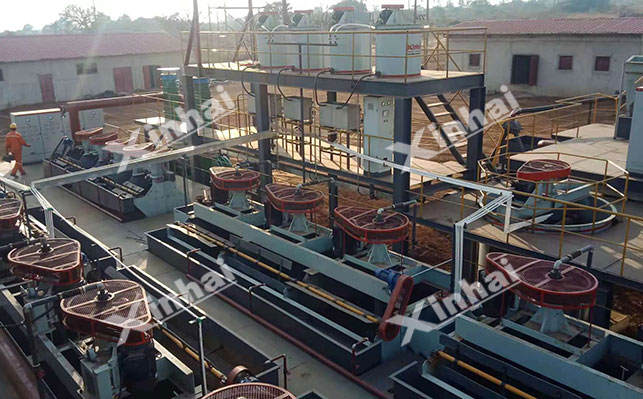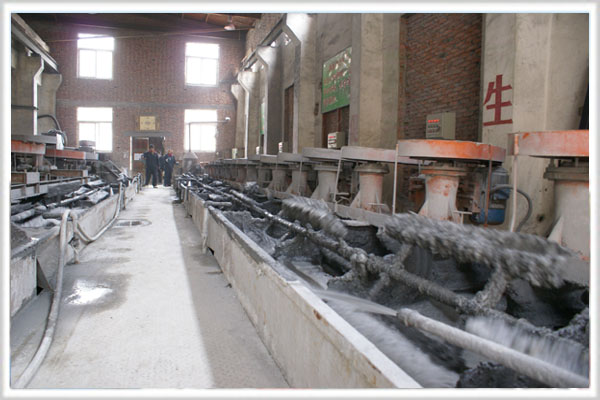If you want to know more information (such as product/process price, etc.), please contact us 24-hour telephone
Separating nickel from copper is a critical challenge in metallurgy, especially in sulfide ore processing and recycling industries. The complex chemical similarities between these metals demand precise nickel-copper separation methods to achieve high purity and economic efficiency. This article explores proven techniques, cost considerations, and eco-friendly strategies to address your separation challenges.
Effective nickel-copper separation relies on four primary technologies, each suited to specific ore types or material forms:
1.1 Flotation
Widely used in sulfide ore processing, flotation exploits differences in mineral hydrophobicity. By adjusting pH (8-11) and adding collectors (e.g., xanthates) and frothers, nickel-copper sulfides are selectively separated. For example, pentlandite (Ni) attaches to bubbles, while chalcopyrite (Cu) sinks.

1.2 Solvent Extraction (SX)
For leach solutions (e.g., sulfuric acid baths), organic extractants like LIX 84 selectively bind copper ions, leaving nickel in the aqueous phase. This method achieves >90% purity but requires precise reagent control.
1.3 Electrorefining
Applied to metallic mixtures (e.g., anode slimes), electrolysis uses voltage differences to deposit pure copper at cathodes, while nickel remains in solution. Ideal for high-purity copper production but energy-intensive.
1.4 Pyrometallurgy
In smelting, temperature-controlled oxidation separates nickel and copper. For instance, converting matte in a Peirce-Smith furnace oxidizes iron and sulfur, enriching nickel content.
2.1 Process Flows
Sulfide Ores: Crushing → Grinding → Flotation → Roasting → Leaching → SX → Electrowinning.
Alloys/Scrap: Melting → Slagging (to remove impurities) → Electrolysis/Chemical precipitation.
2.2 Critical Parameters
Flotation: pH (9–10.5), particle size (<75 μm).
Solvent Extraction: Organic-aqueous phase ratio (1:3), temperature (25–40°C).
Electrorefining: Current density (200–250 A/m²), electrolyte composition (Cu²⁺, Ni²⁺, H₂SO₄).
| Method | Recovery Rate | Cost | Best For |
|---|---|---|---|
| Flotation | 70–85% | Moderate | Initial sulfide ore processing |
| Solvent SX | 90%+ | High (reagents) | High-purity leachate separation |
| Electrorefining | 95%+ | Very High | Refining anode copper/nickel |
| Pyrometallurgy | 80–90% | Moderate-High | Bulk alloy processing |
Flotation suits budget-limited projects, while SX and electrorefining prioritize purity.
4.1 Risks
Toxic reagents (cyanides, solvents) require PPE and sealed systems.
SO₂ emissions from smelting necessitate scrubbers (e.g., lime-based wet scrubbers).
4.2 Eco-Solutions
Closed-loop water systems: Minimize wastewater in sulfide ore processing.
Bioleaching: Replace sulfuric acid with bacteria (e.g., Acidithiobacillus) for low-impact metal recovery.

Trust Xinhai Mining for Your Separation Needs
At Xinhai Mining, we deliver end-to-end EPCM+O services and cutting-edge equipment for nickel-copper separation. From optimizing flotation circuits to designing solvent extraction plants, our solutions ensure:
Higher recovery rates via AI-driven process control.
Lower costs with energy-efficient smelting furnaces.
Zero discharge through integrated water recycling systems.
Explore our modular SX plants and flotation cells designed for sulfide ore processing – contact us today for a tailored proposal!